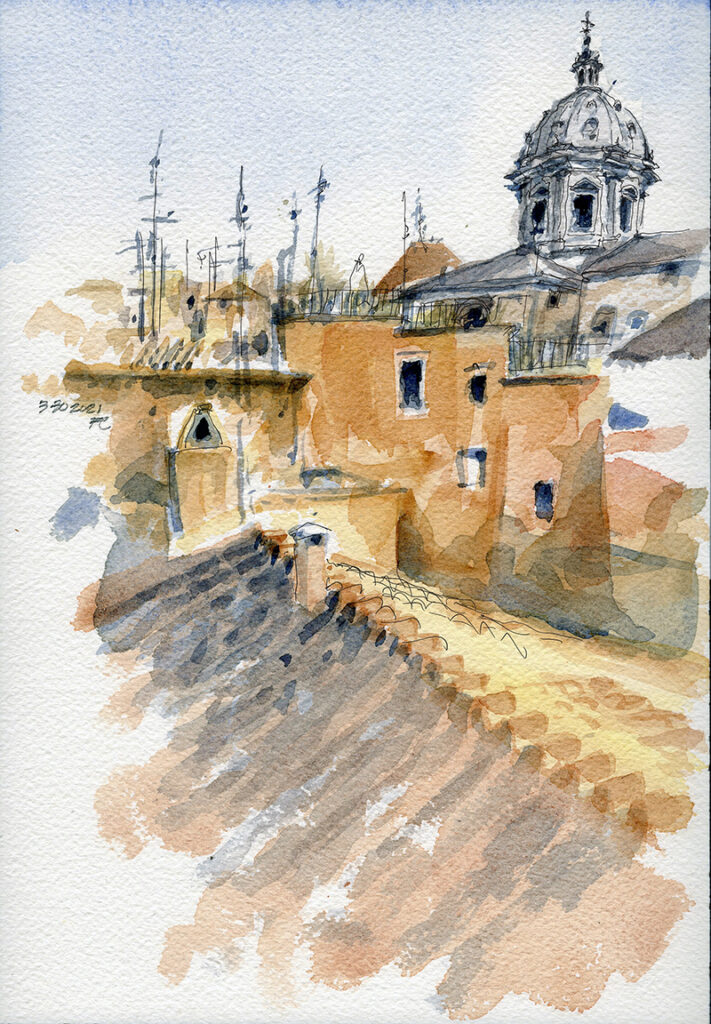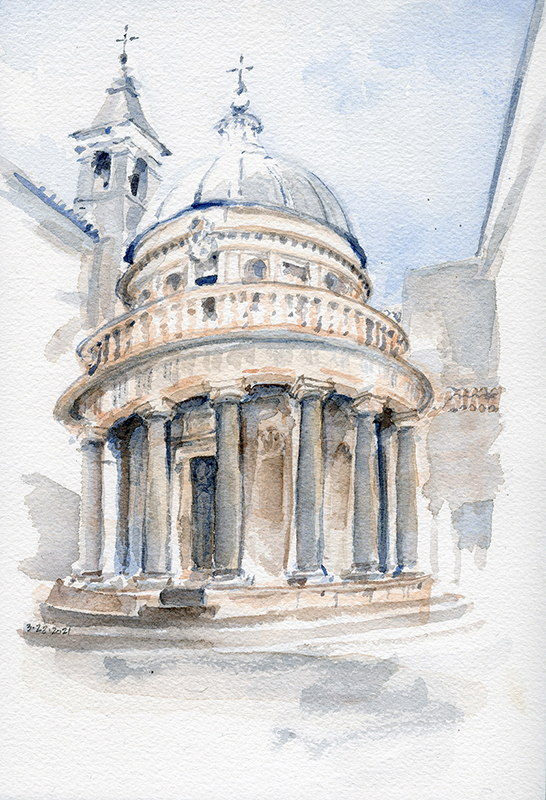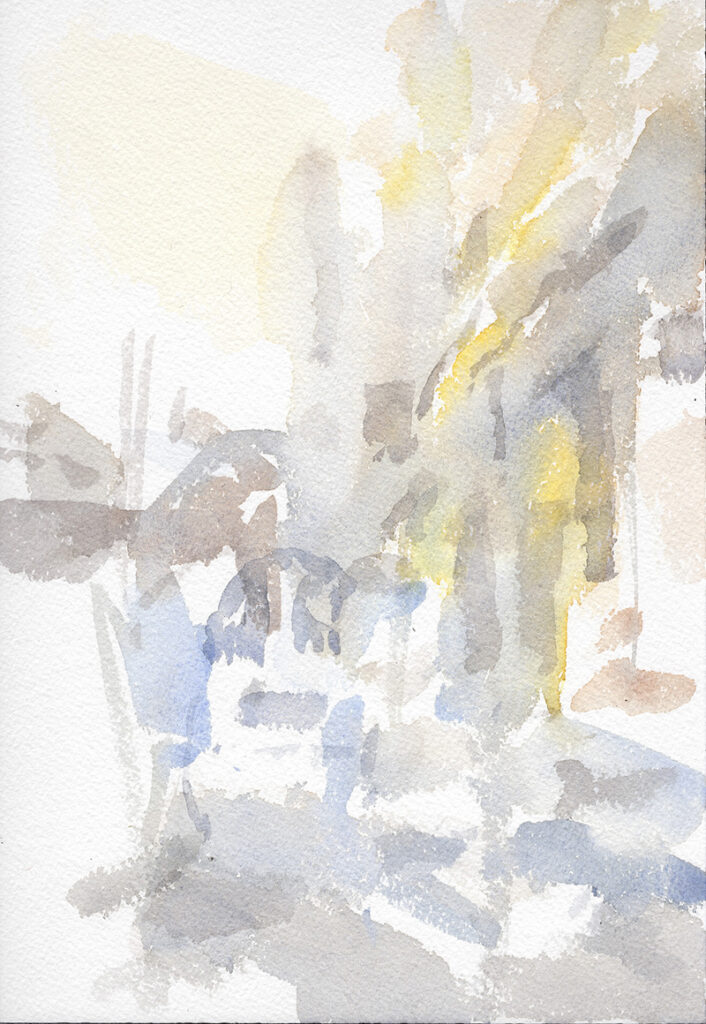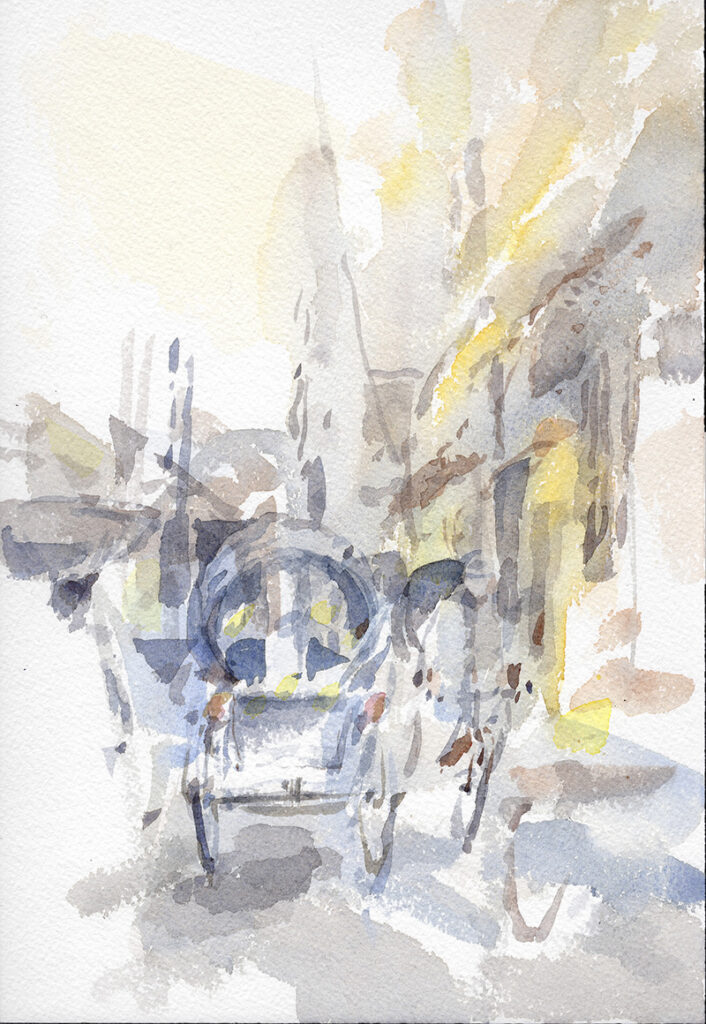
A familiar sight whenever one looks out from an upper story in Rome—a collage of church domes, tile roofs, and tv antennae.


The Tempietto is a small, elegant temple situated in an outer cloister of San Pietro in Montorio, reportedly the site of St. Peter’s crucifixion, on the eastern slope of Gianicolo Hill in Rome. King Ferdinand commissioned Donato Bramante to design the martyrium in the early 16th century. It is basically a cylindrical form ringed by a series of Tuscan columns and topped by a hemispherical concrete dome. This and other examples of western classical and renaissance architecture are difficult to draw well due to the genre’s precise attention to proportion and scale. It is relatively easy to distort their forms, as in this case, where the vertical axis tilts slightly and the cylindrical from droops downward and to the left.

Recalling memories of driving across Sicily in 2006 with Deb and friends Margie and Jim.

In this view of an art museum in Palermo, I am looking from an upper level, through a staircase in the middle ground, to a courtyard beyond. To convey a sense of spatial depth on the page, I attempted to use relative values and value contrast to suggest what is near, clarifying what is in the middle ground, and again merely suggesting what is far away. In the image below, I have stripped away the color to show the equivalent gray values of the sketch.


Xia-Hai City God Temple, built in 1856, is nestled on Dihua Street in the Datong District of Taipei City. The temple hosts statues to the City God, the Chinese Cupid, and hundreds of other deities within its 152 square meters. In Chinese mythology, the City God originally protected the wall and moat of a city. Later, it became a deity who protected against natural disasters and administered to the spirits of the dead.
On the 14th day of the fifth lunar month each year, the temple hosts a City God Birthday Procession, which includes lion dances and other theatrical performances. In 1985, Taiwan’s Ministry of the Interior designated the temple a historical monument.

The Deva Gate on the left leads up to Kiyomizu-dera (Pure Water Temple), a Buddhst temple complex on the mid-slope of Mt. Otowa, in the eastern part of Kyoto. A UNESCO World Cultural Heritage site, the temple was founded in 778 by Sakanoue-no-Tamuramaro. Most of the present structures were rebuilt in 1633 after a fire. Notably, the Hondo (Main Hall) and the wooden viewing stage that juts out from it were constructed without the use of nails, just the art of Japanese joinery.

Another watercolor sketch, this time of a narrow interior street within the medina of Fez, in Morocco. UNESCO declared the medina a World Heritage Site in 1981.

A different, more disciplined approach than used in previous watercolors. This time, a sketch from memory of the view while ferrying to Vashon Island from West Seattle on a misty morning.

A narrow street in Old Dhaka, densely lined with decorated brick buildings and artisan shops specializing in the crafting of jewelry from conch shells. The following images show the evolution of the sketch, from a stream of consciousness approach to the overall composition, followed by the application of darker values that begin to define major shapes, and finishing with a few inked lines to suggest certain details. I definitely prefer laying ink lines over a watercolor rather than laying down watercolors over inked lines. The former technique fosters a freer approach to the laying down of color and value.






A view of the central garden courtyard around which the Casa Azul (Blue House) was built in 1904. Located in Coyoacán, one of the oldest neighborhoods in Mexico City, this casa is where Frida Kahlo was born in 1907, grew up, and where she died in 1954. Four years later, Casa Azul was turned into a museum dedicated to the life and work of Frida Kahlo.